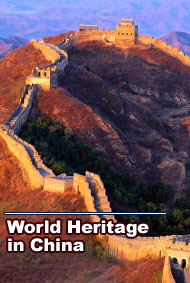
|
|
|
The art of Chinese seal engraving
In 2009, The art of Chinese seal engraving was inscribed on the Representative List of the Intangible Cultural Heritage of Humanity by the UNESCO. Description The art of seal engraving is a cornerstone of Chinese fine arts. The seal was originally used as a signature or sign of authority, but it came to be used by all social classes and in much of Asia. The Seal Engravers’ Society of Xiling in Zhejiang Province, central China, which was founded a century ago, preserves the art of seal engraving along with approximately a hundred other specialized institutions. The design is first sketched on paper, and then engraved on stone, in reverse, with a knife. In addition to mastery of traditional calligraphy, the art of engraving requires a high degree of virtuosity, since the artist works on a tiny surface area where every curve, every thickness of line counts. The very diverse motifs are the fruit of the artist’s imagination and culture. As an instrument of calligraphy and painting, the seal is a work of art in itself. It expresses an entire culture’s ideas about humankind and nature. Today, seals continue to be used in official documents and private correspondence. Even though those understanding the complex characters are ever fewer, the art of seal engraving is still practised by both professionals and amateurs. Documents Nomination form: English|French Consent of communities: English Decision 4.COM 13.06 The Committee (…) decides that [this element] satisfies the criteria for inscription on the Representative List, as follows: R1: The element is transmitted from generation to generation through a traditional master-apprentice system and gives its practitioners a sense of identity and continuity; R2: Inscription of the element on the Representative List would contribute, through celebrating creativity and diversity, to the visibility of intangible cultural heritage at the local, national and international levels; R3: Proposed safeguarding measures include research, awareness-raising, supporting the recognized masters and facilitating inter-generational transmission; R4: Three relevant organizations of practitioners were widely involved in the process of nomination and gave their free, prior and informed consent; R5: The element is inscribed on the National List of Intangible Cultural Heritage administered by the Department of Intangible Cultural Heritage of the Ministry of Culture |